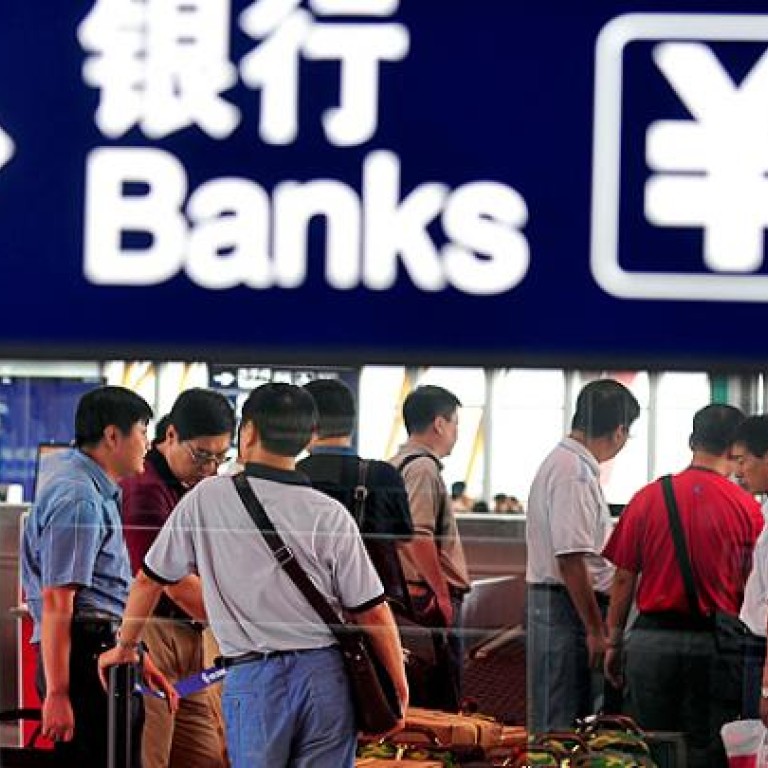
Bears are back as China GDP tipped to slide closer to 7pc
Experts who previously thought sub-8pc growth rates were unthinkable for China are now forecasting figures close to 7pc – the level at which a hard landing looms large.
Experts who previously thought sub-eight per cent growth rates were unthinkable are now falling over themselves to issue forecasts for China that are edging perilously close to seven per cent – the level at which a hard landing supposedly starts becoming probable rather than possible.
China issues third quarter gross domestic product (GDP) figures on Thursday, and the numbers are expected to reflect the impact of the protracted euro zone sovereign debt crisis and a faltering economic recovery in the United States.
People’s Bank of China Deputy Governor Yi Gang said last week in Tokyo that China’s economy would probably grow by 7.8 per cent this year, and economists queried it.
“This is a view that I find too optimistic,” said Mizuho Securities chief economist Shen Jianguang. “Given the government’s policies implemented so far, I believe this will be a challenge.”
In recent weeks both the World Bank and the Asian Development Bank (ADB) have both cut full-year growth forecasts for China.
The World Bank cut its full-year forecast to 7.7 per cent from 8.2 per cent, and pruned its next year forecast to 8.1 per cent from 8.6 per cent previously.
“China’s slowdown this year has been significant, and some fear it could still accelerate,” the World Bank said.
The ADB cut its this year forecast to 7.7 per cent, from a previous forecast of 8.5 per cent, and cut its next year forecast to 8.1 per cent from 8.7 per cent.
Experts polled by Reuters earlier this month now expect this year to be China’s weakest full year of growth since 1999 at just 7.7 per cent. The Reuters poll forecasts annual growth of 7.4 per cent in Q3, down from 7.6 per cent in the second quarter.
The major question preoccupying markets and economists is whether a rebound is in sight.
Capital Economics is cautious, saying Thursday’s data may “suggest the economy has stabilised rather than started to recover.”
Liu Ligang, head of greater China economics for Australia and New Zealand Banking Group (ANZ) was also cautious, saying China is only likely to bottom out in the fourth quarter. On the bright side, having only used 45 per cent of its budget in the first half, it had spare cash to help the economy along, he added.
Morgan Stanley is forecasting that China’s growth slowed to 7.3 per cent in the third quarter from a 7.6 per cent gain in the second quarter. However, fixed-asset investment and retail sales growth could come in higher in September, helped by looser liquidity conditions and a “more proactive fiscal policy of late”, the investment bank said.
While speculation of imminent government intervention has periodically galvanised China’s markets recently, Beijing is cautious after its earlier stimulus package imposed in the wake of the global financial crisis helped stoke inflation and led to an overheated property market.
Liao Qun, an economist with CITIC Bank International, said authorities had some scope to move.
“Inflation is unlikely to rebound much in the fourth quarter, which leaves more room for policymakers to conduct more easing,” Liao said.
Data released this week showed inflation in China fell to 1.9 per cent from 2.0 per cent, and Liao said a third quarter GDP figure of below 7.4 per cent would quickly spur authorities to announce either an interest rate cut or a relaxation in the reserve requirement ratio (RRR).
Spurring growth without causing property bubbles will be the ”toughest short-term economic policy challenge” the authorities face,” said IHS Global Insight Senior China Economist Alistair Thornton.
Thornton said significant reforms or policy measures would probably have to wait until the country’s new leadership has been chosen at the Communist Party’s 18th national congress.
“For now, growth is crab-walking,” Thornton said. “Those looking for concrete signs of momentum and policy support will have to wait until after the Congress.”


